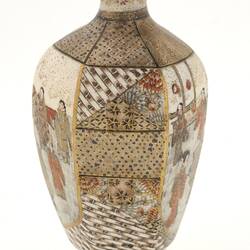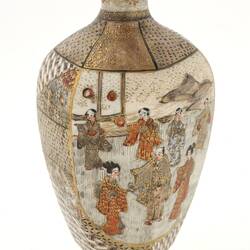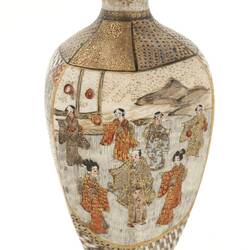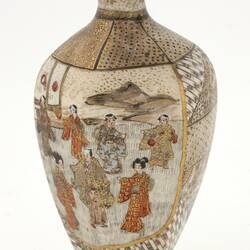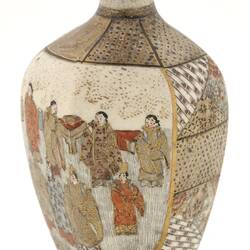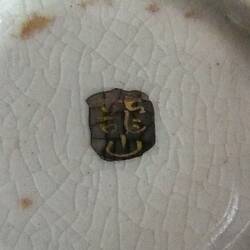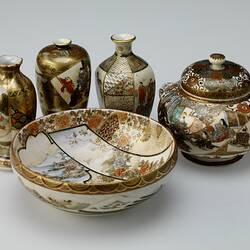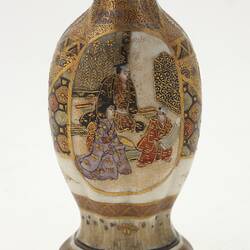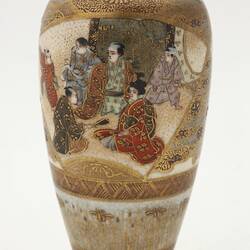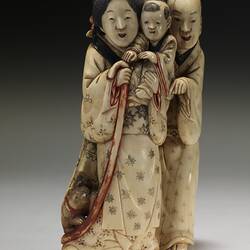Summary
Miniature Satsuma style vase enamelled in gold, russet, blue and silver signed Ryu-zan. Manufactured in Japan during the early Meiji Period (1868-1880).
The style of painting on this vase is known as Kinran-de (gild on). The scenes depicted are those of entertainment and leisure for the upper classes of Japanese society during the Heian (794-1191) and later Edo (1600-1867) periods. Kinran-de pottery, with designs of this kind, are rarely seen in Japan and were almost exclusively produced for export markets.
Satsuma ware is a type of Japanese ceramic pottery, also known as 'Satsuma porcelain'. The term can be used to cover a variety of ceramics, but is often used to describe a style identified by its rich gold and polychrome decoration. The technique developed during the sixteenth century, following the Japanese invasion of the Korean Peninsula, when Korean potters were brought back to Japan to establish a pottery industry. Satsuma ware was introduced to a Western market following the exhibition of examples at the 1867 Paris International Exhibition, at the end of the Edo period, and very quickly gained an appeciation outside of Japan.
Physical Description
Miniature vase. A footed bulbous form with flower rim, gilded decoration and two panels showing upper class people of the Heian (794-1191) and Edo (1600-1867) periods being entertained.
More Information
-
Collection Names
-
Collecting Areas
-
Acquisition Information
Cultural Gifts Donation from Dr Will Twycross, 23 Jan 2009
-
Acknowledgement
Donated through the Australian Government's Cultural Gifts Program
-
Manufacturer
-
Place & Date Exhibited
Royal Exhibition Building (REB), Carlton, Greater Melbourne, Victoria, Australia, 1880-1881
-
Collector
Mr John Twycross, Elsternwick, Greater Melbourne, Victoria, Australia, 1881
-
Inscriptions
Marked on base with painted gilt on black signature: Ryu-zan
-
Classification
Royal exhibition building, International exhibitions, Exhibition heritage
-
Category
-
Discipline
-
Type of item
-
Overall Dimensions
60 mm (Width), 100 mm (Height)
-
Maximum dimensions
95 mm (Height), 50 mm (Outside Diameter)
Measurement From Conservation.
-
Keywords
Ceramics, Decorative Arts, Exhibitions: Melbourne International, 1880-1881, Japanese Art, Royal Exhibition Building

